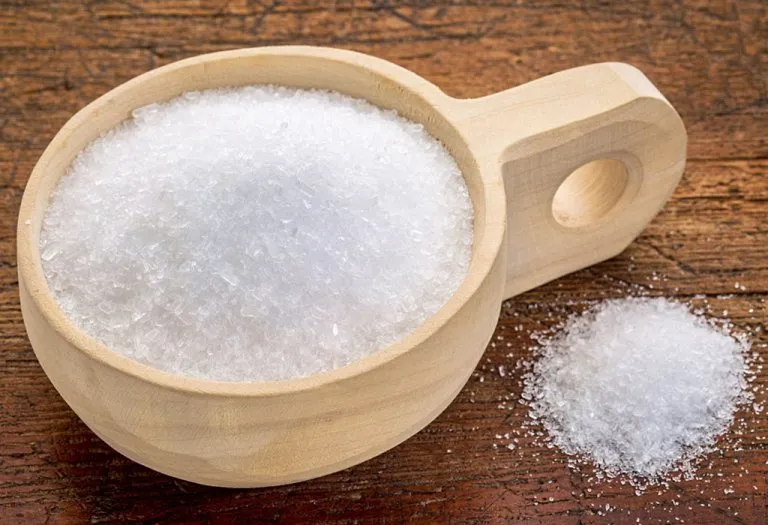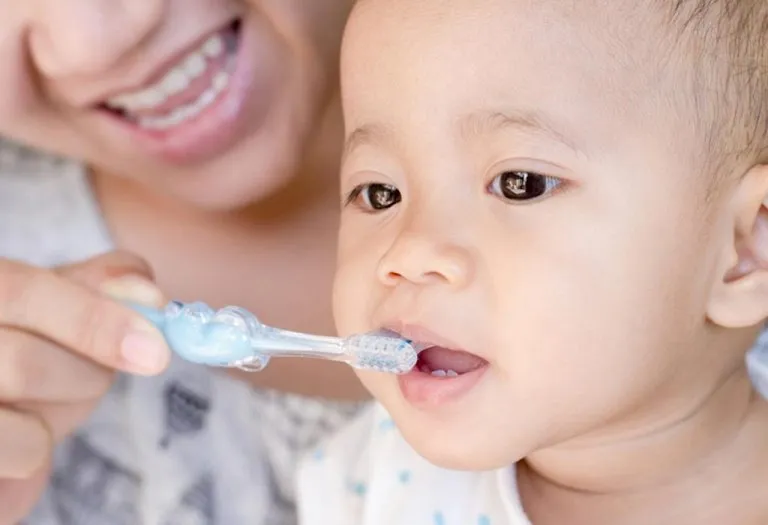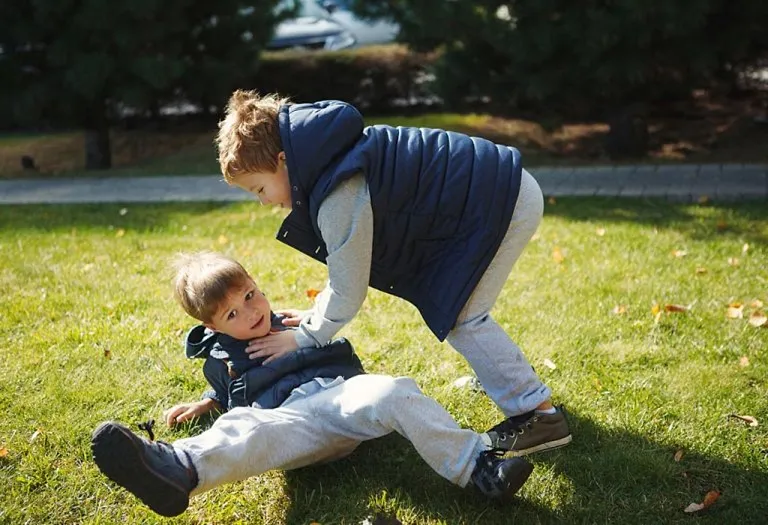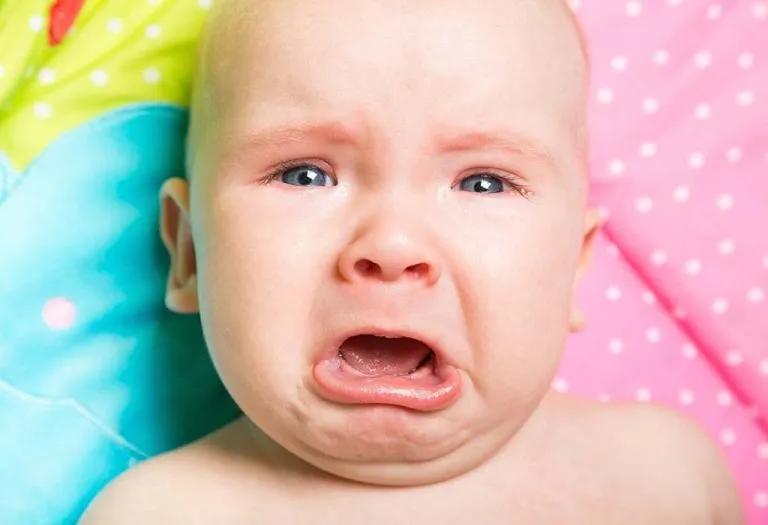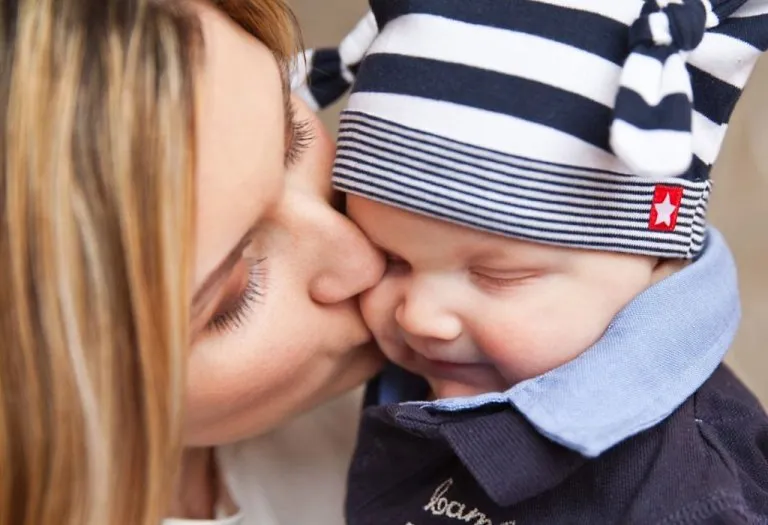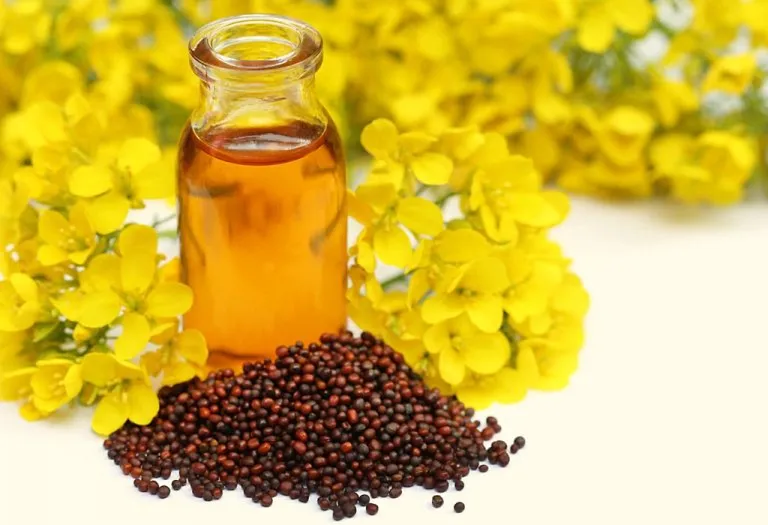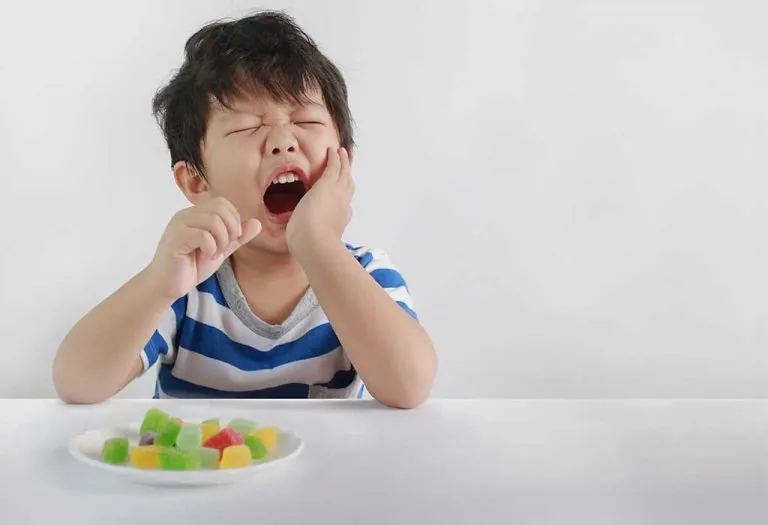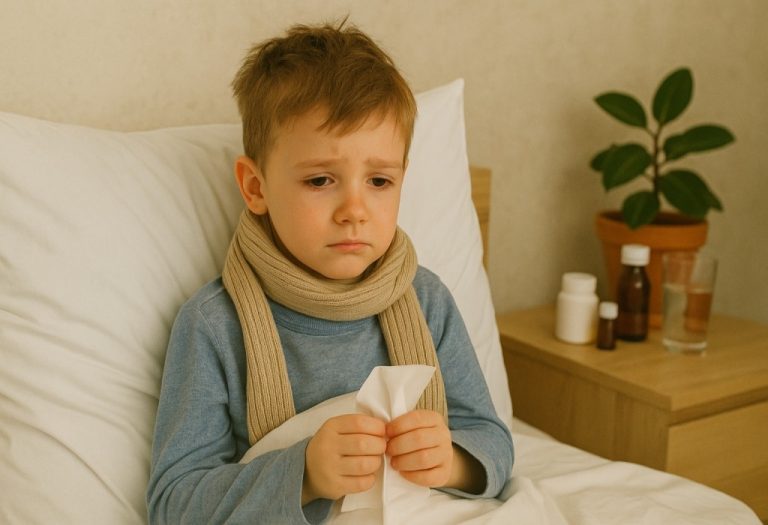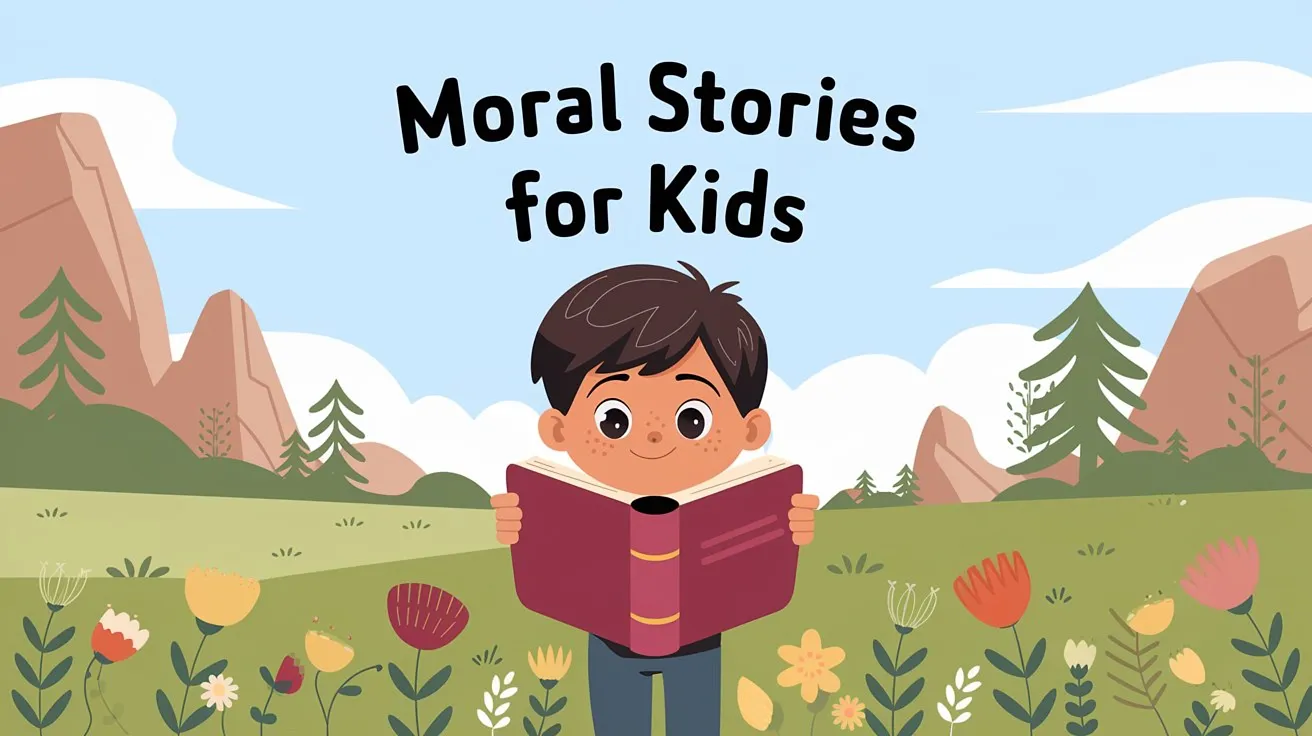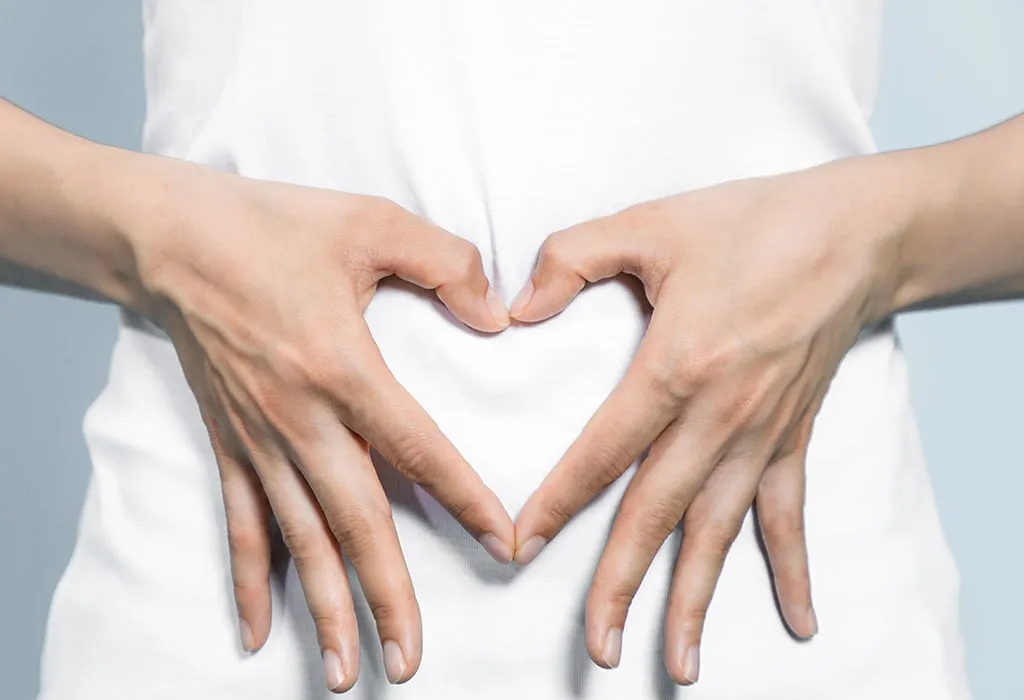Epsom Salt Bath for Babies and Kids – Benefits & Risks

- What Is Epsom Salt?
- Can Kids Take Epsom Salt Baths?
- How Does an Epsom Salt Bath Work for Children?
- Benefits of Epsom Salt Baths for Babies and Children
- How to Give Your Child an Epsom Salt Bath
- Potential Risks of Using Epsom Salt in Your Child’s Bath
- Things to Consider While Using Epsom Salt During a Bath
- FAQs
All parents worry about their child’s well-being and take every possible step to ensure that she grows in a healthy manner – from providing the right kind of nutrition to inculcating good habits and building their hobbies and interests, every parent wants the best for their children. An Epsom salt bath for babies & kids can be a soothing and beneficial addition to their routine. Bathing your child is also an important step in keeping her healthy, and one way you can ensure her health is by giving her an Epsom salt bath. This simple remedy helps relax muscles, promotes better sleep, and supports overall wellness in growing children.
Also Read: Breast Milk Bath for Babies
What Is Epsom Salt?
Epsom salt or magnesium sulfate is a mineral that has been used for medicinal purposes for centuries around the world (1). Epsom salt is rich in numerous detoxifying components, including magnesium, which are known to have medicinal benefits. Over 300 enzymes rely on manganese for their proper functioning, making Epsom salt beneficial for everyone.
Can Kids Take Epsom Salt Baths?
Epsom salt is an extremely healthy mineral when used in the correct manner. It is recommended that you use this mineral after consulting with your doctor. However, please note that a low-grade Epsom salt bath for an infant is extremely dangerous. Make sure to buy only high-grade, pure Epsom salt meant for baths and is recognised by a reputed quality monitoring institution.
How Does an Epsom Salt Bath Work for Children?
Epsom salt contains sulphate and magnesium ions. When dissolved in water, it releases those ions, which are considered highly beneficial for the body. When you bathe in Epsom salt water, your skin absorbs the magnesium and sulphate ions.
Although this transdermal absorption of these ions from Epsom salt water isn’t conclusive in many studies, anecdotal evidence supports that it could be beneficial if used under expert guidance (2).
Benefits of Epsom Salt Baths for Babies and Children
Here are some key benefits of an Epsom salt bath for newborns and young children:
1. Reduces Inflammation
The magnesium in Epsom salt is well known for its potent anti-inflammatory properties.
2. Improves Blood Circulation
Most enzymes that help in circulation rely on magnesium. Epsom salt contains magnesium in abundance, which makes it a great mineral for improving blood circulation.
3. Builds Healthy Joints
The sulfates in Epsom salt help build and strengthen joints (3).
4. Exfoliates Skin
The sulfate in Epsom salt removes dead skin, repairs damaged skin cells and ensures the growth of new, healthy skin cells (4).
5. Helps Oxygen Flow
Magnesium has potent oxygenation properties that are great for your baby’s respiratory tract.
6. Improves Sunscreen Effectiveness
When paired with a suitable sunscreen on your child’s skin, Epsom salt adds a layer of protection against the dangerous UV rays.

7. Repairs Muscles
Epsom salt baths are commonly used to help athletes recover from muscle fatigue and damage. The same effect can do wonders for your growing baby.
8. Regulates Digestion
A warm Epsom salt bath is known to help one’s body function in a calming manner. This may work well for your baby or your child as well.
9. Constipation
Doctors commonly recommend that you draw an Epsom salt bath for baby constipation as Epsom salt is a natural external laxative.
10. Autism
Magnesium is great for nerve impulse regeneration and management. When you combine that with sulfates, it improves serotonin levels, corrects calcium deficiencies and helps form healthy cells and chromosomes. This is why doctors think an Epsom salt bath for autism can be a useful management tool.
11. Eczema
Medical professionals consider baths using Epsom salt for an eczema baby because magnesium helps reduce inflammation, repairs skin cells and also relieves itchiness (5).
12. Psoriasis
The hydrating and exfoliating properties of sulfate combined with the skin-repairing properties of magnesium make Epsom salt baths perfect for any child suffering from psoriasis.
How to Give Your Child an Epsom Salt Bath
Before giving your child an Epsom salt bath, it is crucial to know how to prepare the bath and the technique used to give the bath (6).
1. What You Need
High-grade Epsom salt, a bucket of warm water, and a towel for drying.
2. Procedure
It is important to understand how much Epsom salt in the bath for kids is ideal. The maximum you should use is a couple of cups per bath. Add the salt to slightly warm water and let it dissolve and then add some more water in the bath – approximately enough to reach the baby’s waist. Let your child soak in the bath for 20 minutes. Ensure you don’t wipe her dry; instead, pat her dry. Repeat this process three times a week.
Potential Risks of Using Epsom Salt in Your Child’s Bath
Overusing Epsom salt can cause risks like skin irritation, diarrhoea, and rashes. To know more, please consult your doctor.
Things to Consider While Using Epsom Salt During a Bath
While Epsom salt baths have many benefits, parents must take certain precautions to ensure safety and effectiveness. Here are a few things to consider when giving an Epsom salt bath to your toddler (7):
- Ensure the Salt Is Fully Dissolved: Before letting your child into the bath, stir the water thoroughly to dissolve all Epsom salt crystals. Undissolved salt can irritate sensitive skin.
- Use the Right Quantity: Avoid exceeding 2 cups of Epsom salt in a single bath, as too much can dry out the skin or cause discomfort.
- Limit Bath Frequency: Epsom salt baths should be given only 2-3 times a week to prevent skin dryness or mineral imbalance.
- Check for Allergies: If it’s your child’s first time using Epsom salt, consult a pediatrician to rule out allergies or skin sensitivities.
- Never Leave Your Child Unattended: Always supervise your child during an Epsom salt bath to prevent accidental ingestion or slipping.
- Test Water Temperature Before Bathing: Ensure the water is lukewarm (not hot) to avoid burns or discomfort.
- Avoid Epsom Salt Baths for Open Wounds or Rashes: If your child has cuts, eczema, or skin irritation, skip the Epsom salt bath as it may cause stinging or worsen the condition.
- Keep Bath Time Short: Prolonged soaking can lead to dry skin, so limit bath time to 10-15 minutes.
- Rinse with Fresh Water After the Bath: After the soak, rinse your child with clean water to remove any residual salt from the skin.
- Watch for Signs of Discomfort: If your child complains of itching, redness, or irritation, discontinue use and consult a doctor.
- Use Only Pure, Unscented Epsom Salt: Avoid Epsom salts with added fragrances or chemicals, as these may irritate a baby’s delicate skin.
- Hydrate Your Child After the Bath: Newborn Epsom salt baths can be slightly dehydrating, so offer water or milk afterward to replenish fluids.
FAQs
1. Is Epsom salt the same as regular table salt?
No, Epsom salt and table salt are not the same. Epsom salt contains magnesium and sulphate, while table salt contains sodium and sulphate.
2. Is it okay for my child to bathe in Epsom salt daily?
Bathing your baby daily in Epsom salt is not recommended. If you frequently bathe your baby in Epsom salt, their delicate skin will dry out. Too much Epsom salt can also lead to overdose symptoms, such as nausea, headache, extreme drowsiness, flushing, and slow heart rate.
3. Can I use soap on my child after an Epsom salt bath?
No, it is not advised to use soap after an Epsom salt bath as it can interfere with the salts absorbed in your little one’s body.
Please consult your doctor if your child has any kind of reaction to her first Epsom salt bath. It is also recommended you seek their guidance before you start giving your child this type of bath and that you ease your child into a routine of Epsom salt baths slowly. Start with once a week and slowly build it to three times a week. It’s best not to go beyond 3 times a week. Also, remember that Epsom salt should never be ingested and it can be extremely dangerous if the child consumes it.
References/Resources:
1. National Library of Medicine – Magnesium Sulfate
2. National Library of Medicine – Myth or Reality—Transdermal Magnesium?
4. ResearchGate – Interaction of mineral salts with the skin: A literature survey
5. American Academy of Pediatrics – 12 Common Summertime Skin Rashes in Children
6. Cleveland Clinic – Should You Take an Epsom Salt Bath?
7. University of Michigan Health – Magnesium sulfate (epsom salt)
Also Read:
Sponge Bath for Newborn Baby
Sponge Bath vs. Tub Bath For Your Baby
When Your Toddler Has a Fear of The Bath
Was This Article Helpful?
Parenting is a huge responsibility, for you as a caregiver, but also for us as a parenting content platform. We understand that and take our responsibility of creating credible content seriously. FirstCry Parenting articles are written and published only after extensive research using factually sound references to deliver quality content that is accurate, validated by experts, and completely reliable. To understand how we go about creating content that is credible, read our editorial policy here.







